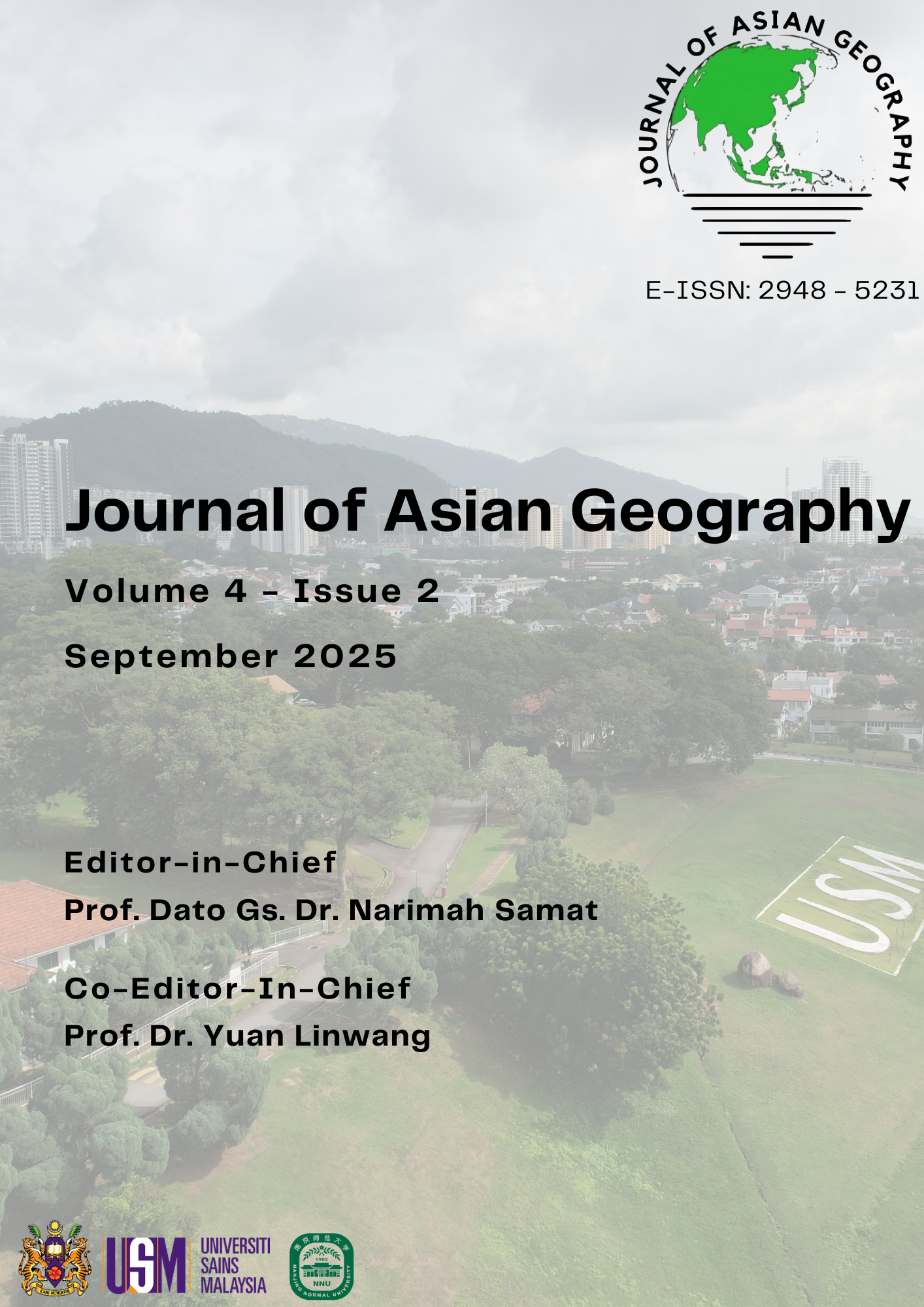GIS-based Multi-Criteria Landslide Hazard Zonation in Cameron Highlands: An AHP Approach for Disaster Resilience
DOI:
https://doi.org/10.36777/jag2025.4.2.4Keywords:
GIS, Landslide, Cameron HighlandsAbstract
Landslides are among the most frequent and destructive hazards in Malaysia’s highland regions, posing threats to communities, infrastructure, and ecosystems. This study aims to develop a GIS-based Landslide Hazard Zonation (LHZ) map for Cameron Highlands using a Multi-Criteria Decision Analysis (MCDA) approach integrated with the Analytic Hierarchy Process (AHP). Five conditioning factors—slope, aspect, rainfall, land use/land cover (LULC), and Normalized Difference Vegetation Index (NDVI)—were derived from remote sensing and spatial datasets. Each factor was reclassified and weighted through AHP, with a consistency ratio (CR = 0.027 < 0.1) confirming reliable judgments. The weighted overlay produced five hazard classes ranging from very low to very high. Results show that approximately 56% of the study area (365 km²) falls within high to very high hazard zones, while only 7% (46 km²) is categorized as low hazard. The findings highlight that unregulated agriculture, slope cutting, and deforestation significantly influence landslide occurrence. This study demonstrates the potential of integrating GIS and AHP for landslide risk assessment and provides an evidence-based tool to support land use planning, slope management, and disaster resilience strategies in highland environments.
Downloads
Published
Issue
Section
License
Copyright (c) 2025 Journal of Asian Geography

This work is licensed under a Creative Commons Attribution 4.0 International License.


